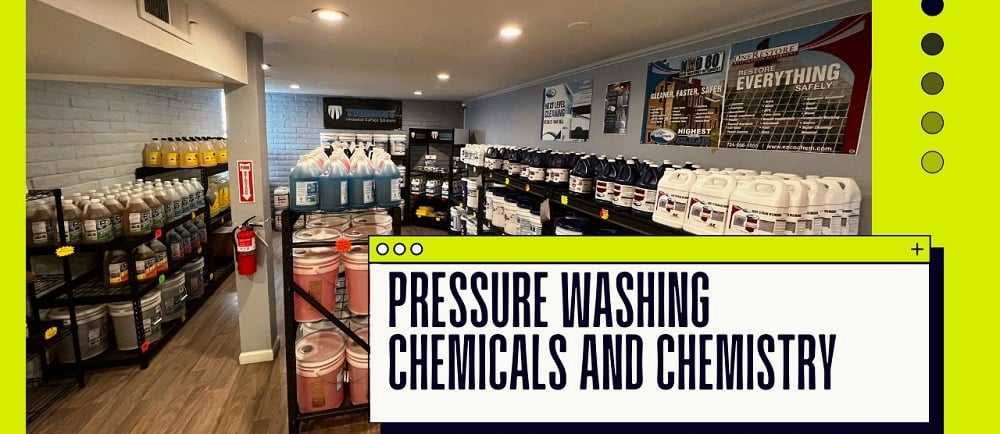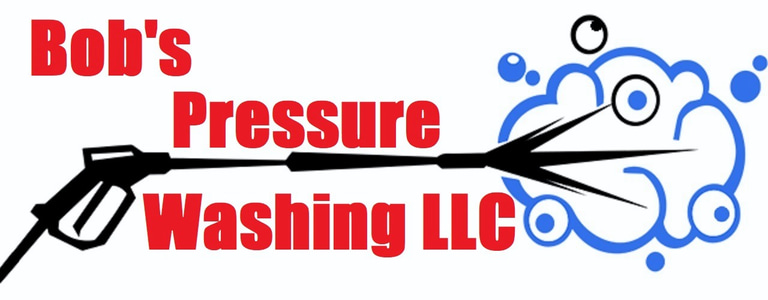Comprehensive Guide to Cleaning Solutions and Chemicals
Comprehensive Guide to Cleaning Solutions and Chemicals
BASIC HOME MAINTENANCEEXTERIOR CLEANING SERVICE PROCESSESCURB APPEALPRESSURE WASHING SERVICES


Introduction to Cleaning Solutions and Chemicals
Cleaning solutions and chemicals play a critical role in maintaining hygiene and cleanliness in both residential and commercial settings. These agents are specially formulated to tackle a wide range of contaminants, from dust and dirt to stubborn stains and harmful pathogens. The diverse array of cleaning products available in the market allows consumers to choose the most suitable option for their specific needs, ensuring that surfaces are not only clean but also safe.
Understanding the different types of cleaning solutions and chemicals is essential for achieving optimal results. Broadly categorized, these cleaning agents include disinfectants, detergents, degreasers, and abrasives. Each type serves a distinct purpose, making the selection process crucial. For instance, disinfectants are specifically designed to eliminate bacteria and viruses, making them ideal for kitchens, bathrooms, and medical facilities. On the other hand, detergents are effective in breaking down grease and grime, suitable for general cleaning tasks.
Choosing the right type of cleaning solution is vital to avoid damaging surfaces and to maximize cleaning efficiency. Surfaces can vary significantly in their composition and sensitivity; therefore, it is important to match the cleaning agent to the surface material. For instance, using a strong acidic cleaner on a marble countertop can lead to etching and damage, whereas a pH-neutral cleaner would be more appropriate. Furthermore, eco-friendly cleaning solutions are gaining popularity due to their reduced environmental impact and safer chemical composition, making them a preferable choice for many households and businesses.
In summary, the importance of cleaning solutions and chemicals cannot be overstated. Selecting the appropriate cleaning agent for different surfaces and purposes not only ensures thorough cleanliness but also safeguards the longevity and appearance of various materials. This foundational knowledge sets the stage for further exploration into the specifics of cleaning solutions and their applications, which will be elaborated on in subsequent sections of this guide.
Detergents and Soaps: Understanding the Basics
Detergents and soaps, though commonly used interchangeably, have distinct chemical compositions and modes of action. Soap is traditionally made from natural fats and oils combined with an alkaline substance such as lye. This mixture undergoes saponification, resulting in soap and glycerin as by-products. Meanwhile, detergents are synthetic substances derived from chemical compounds, often petroleum-based, designed to perform efficiently in hard water and a range of temperatures.
Soaps primarily consist of long chains of fatty acids and are effective in emulsifying fats and oils, making them ideal for personal hygiene and other light cleaning tasks. However, soaps often leave behind a film when used with hard water, potentially reducing their efficacy. In contrast, detergents contain surfactants that lower the surface tension of water, enabling it to spread and penetrate more easily into soils and stains. This distinguishes detergents as superior cleaning agents for tougher jobs and in varied water conditions.
The market offers diverse types of detergents and soaps, each tailored for specific uses. Liquid and powdered detergents are widely used in laundry and dishwashing applications, designed to target different kinds of grime and dirt. In the realm of pressure washers, which find applications ranging from residential driveways and patios to large-scale industrial cleaning, specialized detergents are paramount. These detergents are formulated to break down grease, oil, and other stubborn residues, ensuring thorough and efficient cleaning.
Residential users often opt for biodegradable, eco-friendly soaps to clean outdoor spaces, mitigating environmental impact. Commercial settings, such as restaurants and automotive services, rely on robust detergents capable of meeting stringent hygiene standards. Industrial scenarios, encompassing factories and heavy machinery, necessitate high-performance detergents with enhanced degreasing properties to maintain operational cleanliness and safety.
In essence, understanding the fundamental differences between detergents and soaps, alongside their specific applications, is crucial. This knowledge ensures the selection of appropriate cleaning agents to maximize efficacy and meet the unique demands of various cleaning challenges.
Types of Cleaning Agents Used with Pressure Washers
When employing pressure washers for cleaning tasks, selecting the appropriate cleaning agents is crucial for achieving optimal results. Various types of cleaning agents designed for pressure washers cater to different cleaning needs, surfaces, and levels of grime. Here, we will explore some widely-used cleaning agents, including degreasers, disinfectants, multi-purpose cleaners, and specialty chemicals, detailing their specific applications and benefits.
Degreasers: Degreasers are powerful cleaning agents used to remove grease, oil, and grime from surfaces. They are particularly effective on engines, machinery, and industrial equipment. Degreasers are typically formulated to break down stubborn, oily residues that regular detergents cannot handle, ensuring that the surface is left clean and free of greasy buildup. They are best suited for hard surfaces like metal, concrete, and asphalt.
Disinfectants: Disinfectants are essential for sanitizing surfaces, eliminating bacteria, viruses, and other harmful microorganisms. These cleaning agents are commonly used in healthcare facilities, food processing plants, and public areas to maintain hygiene standards. When paired with a pressure washer, disinfectants ensure thorough cleaning of contaminated surfaces such as floors, walls, and equipment. They are effective on non-porous surfaces like tiles, countertops, and stainless steel.
Multi-Purpose Cleaners: Multi-purpose cleaners offer versatility and convenience, making them suitable for various cleaning tasks. These agents are formulated to tackle dirt, grime, and stains on multiple surfaces, including wood, plastic, metal, and glass. Multi-purpose cleaners can be used on both indoor and outdoor surfaces, such as driveways, decks, and patio furniture. Their broad applicability makes them a popular choice for general maintenance and routine cleaning.
Specialty Chemicals: Specialty chemicals are designed for specific cleaning challenges, such as removing mold, rust, or graffiti. These agents are formulated to address particular issues that standard cleaners might not solve effectively. For example, mold removers contain anti-fungal ingredients to eradicate mold and mildew from surfaces like siding, roofs, and basements. Rust removers use acidic properties to dissolve rust on metal surfaces, while graffiti removers break down paint and ink stains from walls and vehicles.
In conclusion, understanding the various types of cleaning agents available for pressure washers allows for more efficient and targeted cleaning. By selecting the appropriate agent for the job, users can ensure that surfaces are cleaned effectively and safely.
Environmentally Friendly Cleaning Solutions
The quest for cleaner homes and workplaces has often led us to potent cleaning agents, many of which carry harsh chemicals. However, the growing awareness of environmental sustainability has shifted the focus towards eco-friendly cleaning solutions. Opting for environmentally friendly cleaning agents is not only beneficial for the earth but also for human health. These products are formulated to minimize environmental impact, reduce toxicity, and enhance indoor air quality, making them ideal choices for maintaining a healthier living and working environment.
One of the significant benefits of using eco-friendly cleaning solutions is their reduced environmental footprint. Conventional cleaning products often contain volatile organic compounds (VOCs) that contribute to air pollution and water contamination. In contrast, green cleaning products are biodegradable and free from harmful toxins, ensuring less damage to ecosystems and wildlife. Additionally, the use of renewable resources in their manufacture further mitigates the adverse effects on the environment.
Health safety is another critical advantage of turning to environmentally friendly cleaning solutions. Traditional cleaners can cause respiratory problems, skin irritation, and other health issues due to their chemical ingredients. Eco-friendly products, made from natural ingredients, minimize these risks, promoting a safer atmosphere for individuals who suffer from allergies or sensitivity to chemicals. Furthermore, they do not leave behind harmful residues, ensuring that surfaces are safe, especially in homes with children and pets.
Consumers today have multiple options when it comes to sustainable cleaning products. Brands such as Seventh Generation, Ecover, and Method offer a variety of cleaning agents that meet stringent environmental standards. These products are often labeled with certifications like Green Seal or the EPA’s Safer Choice, which guarantee their eco-friendliness. When choosing cleaning solutions, it’s essential to look for these certifications and read ingredient lists carefully to avoid any greenwashing attempts by manufacturers.
Apart from commercial products, practical, homemade cleaning solutions can also be highly effective. Simple combinations of baking soda, vinegar, and lemon juice can tackle numerous cleaning tasks without the environmental burden of traditional cleaners. Adopting practices such as using microfiber cloths instead of disposable wipes and prioritizing multi-use products further contributes to a sustainable cleaning regime.
Chemical Safety: Best Practices for Handling and Use
The safe handling and use of cleaning chemicals are paramount to ensuring a hazard-free environment. It starts with proper storage, ensuring that all cleaning chemicals are kept in a cool, dry place, away from direct sunlight and any incompatible substances. Clearly labeled containers should be used for storing chemicals to avoid accidental misuse and potential harmful reactions.
Correct dilution is another critical aspect. Following the manufacturer's recommendations for diluting concentrated cleaning solutions ensures both effectiveness and safety. Over- or under-dilution may lead to inadequate cleaning performance or increased risk of chemical exposure. Always use measuring tools and never estimate quantities to avoid any potential mishandling.
Safe application techniques play a pivotal role in minimizing health risks and preventing damage. Ventilation is key when using volatile chemicals, and work areas should be well-ventilated to avoid inhalation of fumes that can be harmful. Adopting methods such as wiping surfaces instead of spraying can reduce airborne particles and improve safety.
The use of personal protective equipment (PPE) cannot be overstated. PPE such as gloves, goggles, and aprons provides a barrier between harmful substances and the body. Selecting appropriate PPE for the specific chemical in use can protect against potential splashes, spills, and direct contact.
Understanding how to read and interpret chemical labels and Safety Data Sheets (SDS) is fundamental. Labels provide critical information, including hazard symbols and first aid measures, while SDS offer comprehensive data on handling, storage, and emergency procedures. Employees should be trained to recognize and comprehend these documents to respond effectively in case of accidental exposure or spills.
First aid measures should be readily accessible and staff should be knowledgeable about emergency procedures. Knowing how to perform basic first aid, such as rinsing affected areas with water or seeking medical attention, can mitigate the consequences of chemical accidents.
Conclusion: Making Informed Choices About Cleaning Solutions
In the discourse on cleaning solutions and chemicals, it is crucial to prioritize well-informed decisions. Throughout this guide, we have elucidated the properties, advantages, and potential risks associated with various cleaning agents. Whether dealing with household items or industrial spaces, the choice of an appropriate cleaning solution cannot be understated.
Effectiveness remains a foundational consideration, ensuring that the chosen cleaner accomplishes its intended purpose efficiently. Safety, for both users and the environment, is equally paramount. Many cleaning chemicals pose risks if mishandled or improperly used, underscoring the necessity for thorough understanding and careful application. Additionally, the environmental impact of these products cannot be overlooked. Opting for biodegradable, non-toxic cleaners can significantly reduce ecological footprints.
As advancements continue to emerge within the realm of cleaning technology, staying updated with the latest solutions can offer improved performance and safety. Developing an awareness of new, innovative products allows consumers to benefit from enhanced effectiveness and potentially more sustainable options. Manufacturers frequently innovate, presenting better formulations that balance potent cleaning capabilities with minimized adverse effects.
In making informed choices about cleaning solutions, it is beneficial to consider product labels, ingredient lists, and reliability of the manufacturer. Consulting resources such as safety data sheets (SDS) can also provide valuable insights into the proper handling and potential hazards of cleaning chemicals. Integrating this knowledge ensures that the selected products meet one’s specific needs without compromising health or safety.
Conclusively, selecting the right cleaning solutions involves a meticulous process of weighing effectiveness, safety, and environmental responsibility. By remaining informed and proactive, you can foster cleaner, safer, and environmentally conscious spaces. As the landscape of cleaning solutions evolves, the commitment to making educated decisions will continue to yield significant benefits for personal health and the broader ecosystem.
